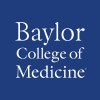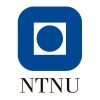
A Study Of Blinatumomab For The Treatment Of Relapsed Or Refractory Indolent Non-Hodgkin Lymphoma...
Non-Hodgkin LymphomaThis research study is studying Blinatumomab as a possible treatment for Indolent Non-Hodgkin Lymphoma (NHL).

Administration of Donor T Cells With the Caspase-9 Suicide Gene
Acute Lymphoblastic LeukemiaMyelodysplastic Syndrome8 morePatients will be receiving a stem cell transplant as treatment for their disease. As part of the stem cell transplant, patients will be given very strong doses of chemotherapy, which will kill all their existing stem cells. A close relative of the patient will be identified, whose stem cells are not a perfect match for the patient's, but can be used. This type of transplant is called "allogeneic", meaning that the cells are from a donor. With this type of donor who is not a perfect match, there is typically an increased risk of developing GvHD, and a longer delay in the recovery of the immune system. GvHD is a serious and sometimes fatal side-effect of stem cell transplant. GvHD occurs when the new donor cells (graft) recognize that the body tissues of the patient (host) are different from those of the donor. In this study, investigators are trying to see whether they can make special T cells in the laboratory that can be given to the patient to help their immune system recover faster. As a safety measure, we want to "program" the T cells so that if, after they have been given to the patient, they start to cause GvHD, we can destroy them ("suicide gene"). Investigators will obtain T cells from a donor, culture them in the laboratory, and then introduce the "suicide gene" which makes the cells sensitive to a specific drug called AP1903. If the specially modified T cells begin to cause GvHD, the investigators can kill the cells by administering AP1903 to the patient. We have had encouraging results in a previous study regarding the effective elimination of T cells causing GvHD, while sparing a sufficient number of T cells to fight infection and potentially cancer. More specifically, T cells made to carry a gene called iCasp9 can be killed when they encounter the drug AP1903. To get the iCasp9 gene into T cells, we insert it using a virus called a retrovirus that has been made for this study. The AP1903 that will be used to "activate" the iCasp9 is an experimental drug that has been tested in a study in normal donors with no bad side-effects. We hope we can use this drug to kill the T cells. The major purpose of this study is to find a safe and effective dose of "iCasp9" T cells that can be given to patients who receive an allogeneic stem cell transplant. Another important purpose of this study is to find out whether these special T cells can help the patient's immune system recover faster after the transplant than they would have otherwise.

Autologous/Allogeneic TGFbeta-resistant LMP-specific CTL, Lymphoma (TGF-beta)
LymphomaHodgkin's Disease3 morePatients have a type of lymph gland cancer called HD, NHL or lymphoepithelioma (these 3 diseases will be referred to as "Lymphoma"). The lymphoma has come back or has not gone away after treatment. This is a research study using special immune system cells called TGFb-resistant LMP-specific cytotoxic T lymphocytes (DNR-CTL), a new experimental therapy. Some patients with Lymphoma show signs of infection with the Epstein Barr virus (EBV) before or at the time of their Lymphoma diagnosis. EBV is found in the cancer cells of up to 1/2 the patients with Lymphoma, suggesting it may play a role in causing Lymphoma. The cancer cells infected by EBV are able to hide from the body's immune system and escape being killed by releasing a substance called Transforming Growth Factor-beta (TGFb). The investigators want to see if special white blood cells (called T cells) that have been given a gene that they hope will let them survive against TGFb and that have been trained to kill EBV infected cells can also survive in the blood and kill the tumor. Investigators have used this sort of therapy with specially trained T cells to treat a different type of cancer that occurs after bone marrow and solid organ transplant called post transplant lymphoma. In this type of cancer they were able to successfully prevent and treat post transplant lymphoma. However when they used a similar approach in HD some patients had a partial response to this therapy, but no patients had a complete response. In a follow-up study they tried to find out if they could improve this treatment by growing T cells that recognize 2 of the proteins expressed on Lymphoma cells called LMP-1 and LMP2a. These special T cells were called LMP-specific cytotoxic T-lymphocytes (CTLs). Although some patients had tumor responses, CTL therapy alone did not cure those who had a lot of disease. Investigators think that a reason for this is that the tumor cells are releasing TGFb. For this reason, they want to find out if they can make the CTL resistant to TGFb by putting in a new gene called TGFb resistance gene. Investigators hope that this will improve this treatment for relapsed lymphoma. These TGFb-resistant LMP-specific CTLs are an investigational product not approved by FDA. The purpose of this study is to find the largest safe dose of TGFb resistant LMP-specific CTLs, to learn what the side effects are and to see whether this therapy might help patients with Lymphoma.

A Post-treatment Program to Identify and Manage Complications Related to Oncology or Hematology...
Late EffectsTesticular Germ Cell Tumor Mixed9 moreINTRODUCTION: Approximately 44% of cancer survivors experience a deteriorated quality of life 5 years after diagnosis due to late onset of complications related to cancer treatments. The objective of the study is to evaluate the incidence rates of treatment-related complications, identify sub-clinical abnormalities and risk factors in patients participating in the PASCA post-treatment program. METHOD: PASCA is a single-center, interventional cohort study of adult patients who received at least chemotherapy and with a complete remission to a testicular germ cell tumor, primary non-metastatic invasive breast carcinoma, high-grade soft tissue sarcoma, osteosarcoma, Ewing's sarcoma, acute myeloid leukemia, Hodgkin's or aggressive non-Hodgkin's lymphoma. Four assessment visits will be scheduled at 1 month (T1), 6 months (T2), 24 months (T3) and 60 months (T4) after completion of treatment. During these visits, 22 complications will be screened and follow-up care will be systematically offered to the health professional concerned by the complication in case of a positive result. The screening will contain the following elements: screening self-questionnaires, quality of life questionnaire, 12 biological parameters, a urinalysis evaluating hematuria, proteinuria, and leukocyturia, a spirometry, an electrocardiogram, 5 tests evaluating physical condition, vital signs and the perimetric measurement between both arms. DISCUSSION: This systematic screening could highlight a number of complications occurring after cancer treatments. Sub-clinical abnormalities and new risk factors could also be identified. This new organization of care could improve the quality of life of adult cancer survivors.

Comprehensive Geriatric Assessment to Predict Toxic Events in Older Patients With Non-Hodgkin Lymphoma...
Non Hodgkin Lymphoma (NHL)Diffuse Large B-cell Lymphoma (DLBCL)This study will evaluate the ability of a largely self-administered geriatric assessment (GA) to predict toxicity in non-Hodgkin Lymphoma (NHL) patients ≥60 years old receiving chemotherapy or chemoimmunotherapy.

Intrathecal Rituximab With Standard Intrathecal Prophylaxis to Prevent CNS Relapse for CD 20+ Non...
Non Hodgkin LymphomaThe purpose of this research study is to learn if giving rituximab, the study drug, right into the spinal canal along with chemotherapy drugs like methotrexate is possible and safe.

Optimization of Therapy in Adult Patients With Newly Diagnosed Acute Lymphoblastic Leukemia or Lymphoblastic...
Acute Lymphoblastic LeukemiaLymphoblastic LymphomaA phase IV study with the primary goal to optimize therapy of adult patients with acute lymphoblastic leukemia or lymphoblastic lymphoma (LBL) by dose and time intensive, pediatric based chemotherapy, risk adapted stem cell transplantation (SCT) and minimal residual disease (MRD) based individualised and intensified therapy. Study will further evaluate the role of asparaginase intensification, the extended use of rituximab and the use of nelarabine as consolidation therapy in T-ALL in a phase III-part of the study. Furthermore two randomisations will focus on the role of central nervous system (CNS) irradiation in combination with intrathecal therapy versus intrathecal therapy only in B-precursor ALL/LBL and the role of SCT in high-risk patients with molecular complete remission. Finally a new, dose reduced induction therapy in combination with Imatinib will be evaluated in Ph/BCR-ABL positive ALL.

Significance of Duration of Maintenance Therapy With Rituximab in Non-Hodgkin Lymphomas
Follicular LymphomasImmunocytomas4 moreThe purpose of this study is to determine if an extended maintenance therapy with Rituximab in follicular and a maintenance therapy in other indolent and mantle cell lymphomas has advantages compared to a shorter or no maintenance therapy.

Diagnostic Assessment of 18F-fluciclovine and 18F-FDG -PET/MRI of Primary Central Nervous System...
LymphomaNon-Hodgkin1 morePrimary central nervous system lymphoma (PCNSL) is a rare subtype of extranodal non-Hodgkins Lymphoma (NHL) with rising incidence and variable response to treatment. MRI is considered the most useful imaging modality of PCNSL, but conventional MRI has its limitations, and contrast-enhanced MRI sometimes does not clearly differentiate PCNSL from other neoplasm or non-neoplastic diseases. Positron emission tomography (PET) could have a number of potential advantages in refining and improving the management of patients with PCNSL. Because of the rare incidence of PCNSL, the value of PET has however not been well defined in this subtype of lymphomas. There are a few studies that have investigated the role for FDG-PET and amino acid PET in the primary staging/diagnosis and response assessment in PCNSL patients, but the results are inconclusive. Further studies are therefore needed. Previous studies support an integration of both MRI and PET for the routine diagnostic workup and response assessment for PCNSL, and the newly available simultaneous PET/MRI scanners may have the potential to improve imaging baseline accuracy, response assessment and add prognostic value in PCNSL. The main aim of the study is to compare the sensitivity and specificity of a combined PET/MRI examination with the clinical routine MRI examination given to these patients today. It will be investigated whether PET (18F-FDG and 18F-fluciclovine) can provide additional prognostic value at baseline and in response assessment compared to MRI and established pre-treatment prognostic scores in PCNSL, and evaluate which PET/MRI parameters that are best suited as an imaging biomarker for progression-free survival.

Haploidentical Allogeneic Peripheral Blood Transplantation: Examining Checkpoint Immune Regulators'...
Acute Myeloid LeukemiaChronic Lymphocytic Leukemia8 moreThe standard Johns Hopkins' regimen will be used in study subjects, with the use of donor peripheral blood stem cells, rather than marrow. Clinical outcomes will be defined while focusing efforts on immune reconstitution focusing on immune checkpoint regulators after a related haploidentical stem cell transplant.
